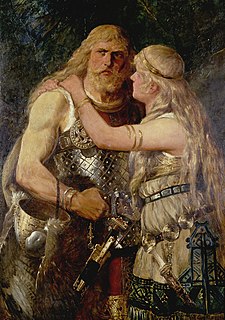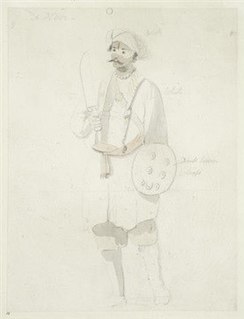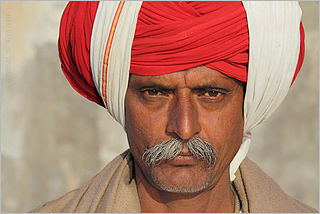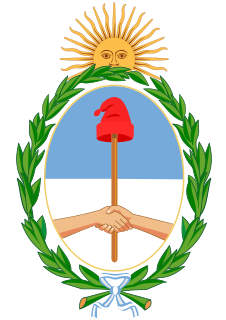Related Research Articles
Incest is human sexual activity between family members or close relatives. This typically includes sexual activity between people in consanguinity, and sometimes those related by affinity, or lineage.

Marriage, also called matrimony or wedlock is a culturally recognized union between people called spouses. It establishes rights and obligations between them, as well as between them and their children, and between them and their in-laws. It is considered a cultural universal, but the definition of marriage varies between cultures and religions, and over time. Typically, it is an institution in which interpersonal relationships, usually sexual, are acknowledged or sanctioned. In some cultures, marriage is recommended or considered to be compulsory before pursuing any sexual activity. A marriage ceremony is called a wedding.

The relationship between religion and homosexuality has varied greatly across time and place, within and between different religions and denominations, with regard to different forms of homosexuality and bisexuality. The present-day doctrines of the world's major religions and their denominations vary vastly in their attitudes toward these sexual orientations.
Adultery is extramarital sex that is considered objectionable on social, religious, moral, or legal grounds. Although the sexual activities that constitute adultery vary, as well as the social, religious, and legal consequences, the concept exists in many cultures and is similar in Christianity, Judaism and Islam. Adultery is viewed by many jurisdictions as offensive to public morals, being a mistreatment of the marriage relationship.

In the Catholic Church, marriage, also known as holy matrimony, is the "covenant by which a man and woman establish between themselves a partnership of the whole of life and which is ordered by its nature to the good of the spouses and the procreation and education of offspring", and which "has been raised by Christ the Lord to the dignity of a sacrament between the baptised." Catholic matrimonial law, based on Roman law regarding its focus on marriage as a free mutual agreement or contract, became the basis for the marriage law of all European countries, at least up to the Reformation.

Half-caste is a term for a category of people of mixed race or ethnicity. It is derived from the term caste, which comes from the Latin castus, meaning pure, and the derivative Portuguese and Spanish casta, meaning race. Terms such as half-caste, caste, quarter-caste and mix-breed were widely used by ethnographers throughout the British Empire to try to classify "the natives", and in Australia used during the pursuit of a policy of assimilation. In Latin America, the equivalent term for half-castes was Cholo and Zambo.

Pathare Prabhu is one of the Hindu communities in the city of Mumbai.
Hindu views of homosexuality, and LGBT issues more generally, are diverse and different Hindu groups have distinct views. A number of Hindu texts have portrayed homosexual experience as natural and joyful, the Kamasutra affirms and recognizes same-sex relations, and there are several Hindu temples which have carvings that depict both men and women engaging in homosexual acts. There are also numerous Hindu deities that are shown to be gender-fluid and falling into the LGBT spectrum. Same-sex relations and gender variance have been represented within Hinduism from Vedic times through to the present day, in rituals, law books, religious or narrative mythologies, commentaries, paintings, and even sculptures. In 2009, the Delhi High Court legalised homosexuality in India, but the Supreme Court of India subsequently overturned the high court's decision. The Supreme Court of India, in a later ruling in 2018, reversed its previous verdict and decriminalised homosexual intercourse and relationships.

The Nair, also known as Nayar, are a group of Indian Hindu castes, described by anthropologist Kathleen Gough as "not a unitary group but a named category of castes". The Nair include several castes and many subdivisions, not all of whom historically bore the name 'Nair'. These people lived, and continue to live, in the area which is now the Indian state of Kerala. Their internal caste behaviours and systems are markedly different between the people in the northern and southern sections of the area, although there is not very much reliable information on those inhabiting the north.
Hindu texts present diverse and conflicting views on the position of women, ranging from feminine leadership as the highest goddess, to limiting gender roles. The Devi Sukta hymn of Rigveda, a scripture of Hinduism, declares the feminine energy as the essence of the universe, the one who creates all matter and consciousness, the eternal and infinite, the metaphysical and empirical reality (Brahman), the soul, of everything. The woman is celebrated as the most powerful and the empowering force in some Hindu Upanishads, Sastras and Puranas, particularly the Devi Upanishad, Devi Mahatmya and Devi-Bhagavata Purana.
The Manusmṛiti is believed to be the first ancient legal text and constitution among the many Dharmaśāstras of Hinduism. In ancient India, often the sages used to put down their ideas on how the society should run on the Manuscripts. It is believed that the original form of Manusmriti was changed as many things written in the Manuscript contradict each other. It was one of the first Sanskrit texts to have been translated into English in 1776, by British philologist Sir William Jones, and was used to construct Hindu law to the advantage of British colonial government.
Interfaith marriage, sometimes called a "mixed marriage", is marriage between spouses professing different religions. Although interfaith marriages are most often established as civil marriages, in some instances they may be established as a religious marriage. This depends on religious doctrine of each of the two parties' religions; some prohibit interfaith marriage, and among others there are varying degrees of permissibility.
In Hindu culture, the term gotra is considered to be equivalent to lineage. It broadly refers to people who are descendants in an unbroken male line from a common male ancestor or patriline. Generally the gotra forms an exogamous unit, with the marriage within the same gotra being prohibited by custom, being regarded as incest. The name of the gotra can be used as a surname, but it is different from a surname and is strictly maintained because of its importance in marriages among Hindus, especially among castes. Pāṇini defines gotra as apatyam pautraprabhrti gotram, which means "the word gotra denotes the descendance, apatya , of a couple consisting of a pautra , a son and a bharti, a mother, i.e. a daughter-in-law." When a person says "I am Vipparla-gotra", he means that he traces his descent from the ancient sage Vipparla by unbroken male descent.

Marriage in ancient Rome was a strictly monogamous institution: a Roman citizen by law could have only one spouse at a time. The practice of monogamy distinguished the Greeks and Romans from other ancient civilizations, in which elite males typically had multiple wives. Greco-Roman monogamy may have arisen from the egalitarianism of the democratic and republican political systems of the city-states. It is one aspect of ancient Roman culture that was embraced by early Christianity, which in turn perpetuated it as an ideal in later Western culture.
Arranged marriage is a tradition in the societies of the Indian subcontinent, and continue to account for an overwhelming majority of marriages in the Indian subcontinent. Despite the fact that romantic love is "wholly celebrated" in both Indian mass media and folklore, and the arranged marriage tradition lacks any official legal recognition or support, the institution has proved to be "surprisingly robust" in adapting to changed social circumstances and has defied predictions of decline as India modernized.
Sambandham was an informal mode of marriage followed by Nairs, Samantha Kshatriyas, Kshatriyas and Ambalavasis with Nambudiris, in what is the present day state of Kerala, India. All of these were matrilineal communities. The custom is no longer observed. Alternate names for the system were used by different social groups and in different regions; they included Pudavamuri, Pudavakoda, Vastradanam, Vitaram Kayaruka, Mangalam and Uzhamporukkuka.

The Banjara are a historically nomadic trading tribe who may have origins in the Mewar region of what is now Rajasthan. They are now found throughout Northwestern, Western and Southern India and in many states banjaras being called with different names as lubanas but both castes have different origins.

The Bharwad also known as Gadaria are a Hindu caste found in the state of Gujarat in India, primarily engaged in herding livestock.

Argentine nationality law regulates the manner in which one acquires, or is eligible to acquire, Argentine nationality. Nationality, as used in international law, describes the legal methods in which a person obtains a national identity and formal membership in a nation. Citizenship refers to the relationship between a nation and a national, after membership has been attained. Argentina recognizes a dual system accepting Jus soli and Jus sanguinis for acquisition of nationality by birth and allows foreign persons to naturalize.
Pratiloma is a Sanskrit term used in the Manusmriti, that is the Laws of Manu, to describe a hypogamous union between a high born woman and a man of a lower standing relative to the respective woman. Manu explains that the evolution of different castes among mankind occurred due to the union of two persons who did not belong to the same rung in the caste or class ladder relative to each other. According to Manu, marriage within the same caste, that is, between two persons who belong to the same rung in the ladder, is excellent. Manu bitterly criticises and condemns Pratiloma unions which were considered as "going against the hair or grain" and holds them responsible for the degeneration of the parties involved, subsequent to the union. However, later commentators have come to accept these marriages.
References
- 1 2 Subodh Kapoor. The Indian Encyclopaedia: Mahi-Mewat. Genesis Publishing Pvt Ltd, 2002. p. 4642.
- 1 2 Joseph Kitagawa. The Religious Traditions of Asia: Religion, History, and Culture. Routledge, 2013. p. 16.
- ↑ Irfan Habib, K. N. Panikkar, T. J. Byres, Utsa Patnaik. The Making of History: Essays Presented to Irfan Habib. Anthem Press, 2002. p. 183.CS1 maint: multiple names: authors list (link)
- ↑ Rajendra Kumar Sharma. Fundamentals of Sociology. Atlantic Publishers & Dist, 1996. p. 253.